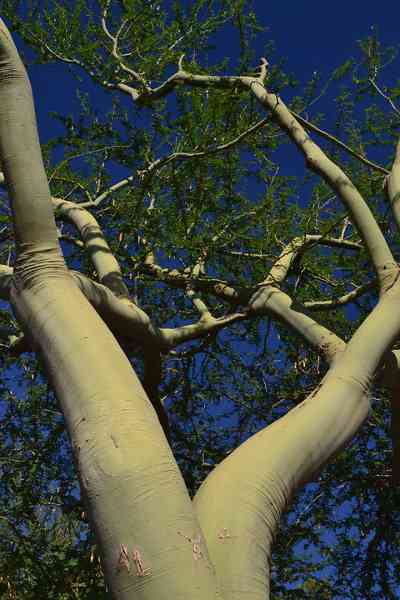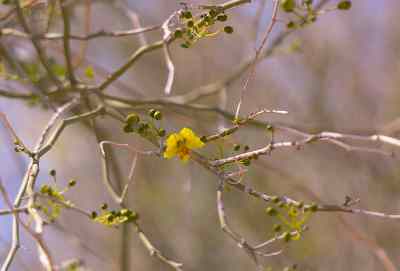Palo Verde Tree Edible Plant Of The Southwest

The bark is either yellowish or bluish-green depending on the species. Both the Blue Palo Verde and the Foothill Palo Verde have leaves with two stems and the leaflets on each stem are arranged in an opposite manner. The trees generally flower in late April through May and then set seed pods a shortly thereafter.
So these trees are quite unique and easy to identify. Palo Verde trees grow quickly and have a short lifespan. Blue Palo Verde grows faster than Foothills Palo Verde but has a shorter lifespan. Palo Verde has venomous spines. The dead leaves rot very quickly and keep soil moist, making them the perfect mulch for desert agriculture.
Let's Eat
Both species of Palo Verde produce both edible flowers and seeds. The pods will dry in early summer. The pods can be collected either before or after the pods dry.
The Palo Verde has edible seeds that when immature, are edible raw, but can also be blanched and then can be pureed, frozen, canned, brined, fermented, or eaten in salads. Mature seeds can be toasted and ground into flour used for many things. Palo Verde beans are 41% protein.
Add water to the flour from the toasted seed to make Pinole, a thick porridge.
If harvested green taste test the few seeds to be sure they are sweet. If they are chalky, stop harvesting them as you have missed the early window. But don't despair. Just wait until the beans have ripened and harvest when they are dry.
Once dry the pods will turn light-brown and the seed will have turned from green to brown.

How they are processed depends on how old the seeds were when picked. Fresh green seeds should be blanched. Blanching can be done either in the pod or after shelling. To blanch, first wash the pods in water. Then place the beans in boiling water for a couple of minutes. Remove and drain the seeds and then quickly place in cold water for a couple of minutes. Remove then drain and dry the pods thoroughly. Store the blanched seeds in airtight containers if you have them. The less air in your container the longer they will last.
If you have harvested dry brown seeds, first shell them. Freeze the seeds if that is possible. After a couple of days of freezing it is OK to remove them from the freezer and store them in sealed jars. At this stage they're best eaten sprouted.
Obviously in a SHTF situation the seeds should be consumed as needed. Trying to stretch the time that you have them stored could lead to waste due to mold and rot.
Hint if you are planning on eating your seeds right away it is still a good idea to blanch or cook them to make them more digestible. To cook them place them in a skillet on medium heat and cook them until they pop.
Another way to eat them is to eat them immediately after they show signs of sprouting.
The Palo Verde also produces copious amounts of flowers that can be eaten raw.
